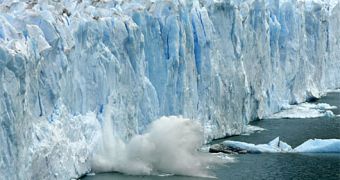The threat that melting glaciers pose is extremely high. If they collapse, the sea levels could rise several feet worldwide, leading to extensive flooding and the alternation of known shore lines. This means that cities such as New York, Tokyo and Bombay could be partially or totally flooded and millions of human lives could be lost. Unfortunately, national authorities worldwide seem to dismiss this issue, completely disregarding what's happening on the poles nowadays.
For starters, most of the 100,000 glaciers in Alaska have melted or are melting right now. Some of the larger chunks of ice are advancing, but environmentalists say that they can't be considered a solid reference point in analyzing regional trends. In other words, while they may be advancing, most others are not. It's still unclear why this happens, but scientists say that, due to the rising of global temperature, it's possible for even the largest glaciers to melt down eventually.
In Europe, the Alps are most threatened by global warming, with glaciers like those in the Swiss Alps being only one step away from disappearing. In Norway, the fjords, the touristic trademark of the country, are already stripped of the glaciers that formed them all year long, not just in the summer. The same applies to the large glacial valleys in the Himalayans, which scientists say will be completely exposed in about ten years.
Since the 1990s, the global trend of glacier melting has increased significantly, with all of Earth's 16,000 glaciers showing signs of retreat. This is a major alarm signal throughout the world, because many of the planet's irrigation systems and hydroelectric sources depend entirely on glaciers for fresh water. The disappearance of those glaciers could very well mean the loss of significant amounts of crops and huge quantities of electrical power. The only thing to do is for people to become aware of these dangers and start acting to avoid them, by lobbing authorities and reducing their impact on the environment.

 14 DAY TRIAL //
14 DAY TRIAL //